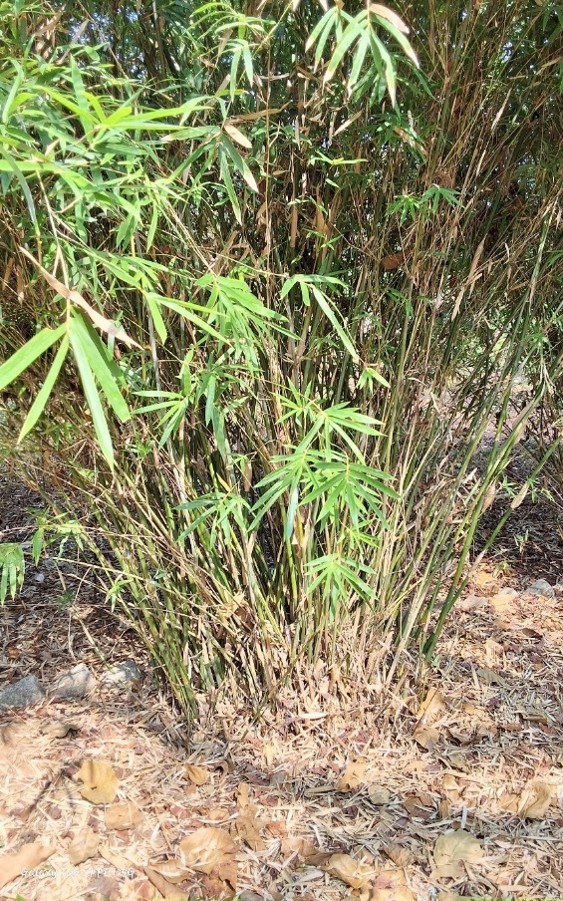Phyllostachys mannii

Phyllostachys mannii
Phyllostachys mannii also known as Mann’s Bamboo in English, is referred to as Mann’s Bans in Hindi,(Zǐzhú) in Chinese, and Trúc Mann in Vietnamese. Native to China, it thrives in subtropical to temperate regions, particularly in the southern provinces of the country, and has been introduced to various parts of the world, including India, Southeast Asia, and Europe for ornamental purposes.
This bamboo species has a clumping habit with dense growth, reaching a height of 6 to 12 meters and a culm diameter of 4 to 6 cm. The culms are dark green to purplish green, turning slightly yellowish with age, and the internode length ranges from 20 to 35 cm. The culm sheaths are green when young and turn yellowish as they age. The adaxial surface is glabrous, while the abaxial surface is lightly pubescent, and the margins are slightly ciliate.
The leaves of Phyllostachys mannii are lanceolate in shape, narrow, and pointed, with a length of 8 to 15 cm and a width of 1.5 to 3 cm. The leaf texture is soft and glossy, enhancing its ornamental appeal.
This bamboo species produces small, compact panicles with dense clusters of spikelets. The flowering glumes are short, glabrous, and yellowish-green, and the stamens are 6 to 8, exserted and visible in the flowers. Phyllostachys mannii has an infrequent flowering cycle, occurring once every several decades. Flowering has been reported in China and occasionally in Europe, but it is a rare event.
The seeds of Phyllostachys mannii are small, light, and wind-dispersed. Seed germination is slow and irregular, requiring warm and humid conditions to thrive. Propagation is commonly done through culm cuttings, which root easily, or by dividing mature clumps. Due to its long flowering cycle, propagation by seed is rare.
Phyllostachys mannii has several practical uses. It is widely grown for ornamental purposes in gardens, parks, and landscapes due to its dense growth and attractive culms. In construction, it is used for lightweight structures like fences, trellises, and small buildings. The bamboo is also well-suited for crafting, including the creation of furniture, baskets, and small decorative items. Additionally, it is effective in erosion control, particularly along riverbanks and slopes, and provides a wildlife habitat, offering shelter for birds and other small animals.
In conclusion, Phyllostachys mannii is a versatile bamboo species, valued for its aesthetic qualities, construction applications, and ecological benefits.
Listen Audio:
Need assistance? BRTC Faculty